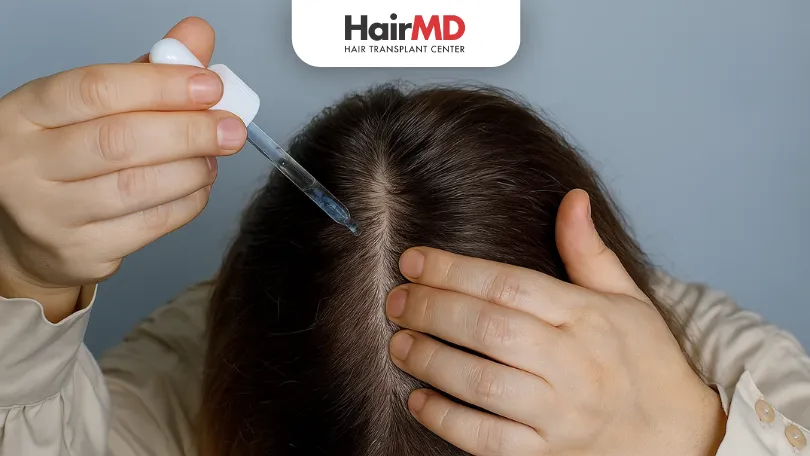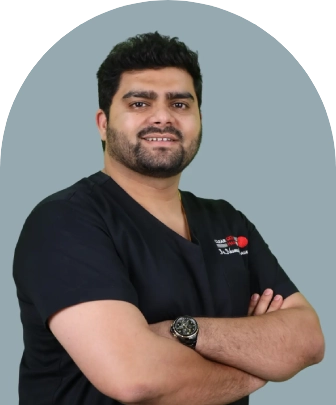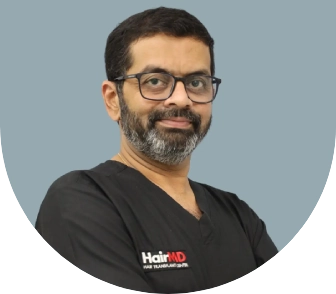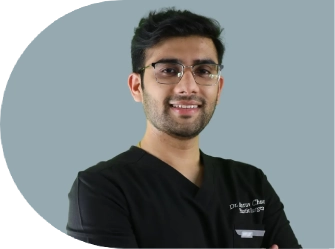25th October, 2025

Hair loss can affect your confidence and appearance, but modern treatments like GFC therapy are giving people new hope for natural hair regrowth.
Hair loss can be a worrying experience, and treatments like GFC offer new hope. GFC, or Growth Factor Concentrate, is a modern therapy that uses your body’s own healing powers to help regrow hair. Many people wonder what comes next after their GFC sessions. A common question is whether it’s necessary to use minoxidil, a well-known hair growth lotion, after the treatment. This article will help you understand the roles of both GFC and minoxidil and guide you on what to do after your treatment.
What’s covered in the article?
- What is GFC Treatment?
- What is Minoxidil and How Does It Work?
- Why Minoxidil is Often Used After a Hair Transplant
- Is Minoxidil Required After GFC?
- Benefits of Using Minoxidil After GFC
- Things to Consider Before Starting
- FAQ
- Conclusion
What is GFC Treatment?
GFC is a simple and safe procedure for hair restoration. It starts with a small sample of your own blood. This blood is then processed in a special machine to separate and collect growth factors. These growth factors are powerful proteins that help your body repair and grow new cells.
Once collected, this concentrate of growth factors is injected into your scalp where the hair is thinning. The treatment works by waking up weak hair follicles and giving them the nutrients they need to grow stronger and healthier hair. GFC helps improve blood flow to the scalp and supports the natural hair growth cycle.
What is Minoxidil and How Does It Work?
Minoxidil is a medicine that you apply directly to your scalp. It comes as a liquid or foam and is one of the most common treatments for hair loss. It was first used as a medicine for high blood pressure, but doctors noticed it also caused hair to grow.
Minoxidil works by widening the blood vessels in your scalp. This allows more oxygen, blood, and nutrients to reach your hair follicles. It also helps keep your hair follicles in their growth phase for a longer time. This leads to thicker hair and can slow down or stop hair loss for many people, especially those with pattern baldness.
Why Minoxidil is Often Used After a Hair Transplant
To understand the situation with GFC, it helps to look at hair transplants. After a hair transplant surgery, doctors often recommend using minoxidil. This is because it helps speed up the growth of newly transplanted hair. It also reduces the temporary shedding that can happen after surgery.
Furthermore, minoxidil helps protect the existing, non-transplanted hair from thinning further. This creates a more balanced and full look. This common practice after a transplant gives us a clue about how minoxidil might work with other hair treatments.
Is Minoxidil Required After GFC?
So, do you need to use minoxidil after GFC? The answer isn’t a simple yes or no. Unlike a hair transplant where new follicles are placed, GFC works by healing and stimulating your existing follicles. For many people, GFC treatment alone is very effective at reviving weak hair and improving density.
However, some experts believe that using minoxidil after GFC can offer even better results. GFC provides a powerful boost to your follicles, and minoxidil can help maintain that momentum. It acts as a daily support system for your hair, while GFC works as a periodic, intensive treatment.
Using both together can be a strong strategy. GFC can heal the follicles from within, and minoxidil can provide continuous stimulation from the outside. If you are looking for information on a combined approach or need guidance on minoxidil treatment Pune can offer expert advice tailored to your needs.
Benefits of Using Minoxidil After GFC
Combining minoxidil with your GFC treatment plan might offer a few key advantages:
- Faster Results: GFC starts the process of hair regeneration. Minoxidil can help speed up this process, potentially letting you see new growth sooner.
- Preventing More Thinning: GFC treats the areas where it is injected. If you have pattern baldness, other areas of your scalp might still be at risk of thinning. Minoxidil applied to the entire scalp can help protect these untreated areas.
- Better Overall Density: By supporting all the hair on your head—both the hair treated by GFC and the hair that isn’t—minoxidil can contribute to a fuller and denser look overall.
Things to Consider Before Starting
Before you start using minoxidil after your GFC sessions, there are a few important points to remember. Your scalp might be a bit sensitive right after the GFC injections. It is wise to wait a few days before applying any products to it.
Your doctor will give you the best advice on when to start. They know your scalp condition and can tell you when it is safe to begin using minoxidil. Always follow their instructions to avoid any irritation or problems. A consultation at a professional clinic like HairMD Clinic Pune can provide you with a personalised treatment plan.
FAQ
1. Can I use Minoxidil and GFC together?
Yes, Minoxidil and GFC can be used together for better results. GFC helps repair and strengthen hair follicles, while Minoxidil boosts blood flow and maintains continuous hair growth support. Your doctor can guide you on when to start Minoxidil after GFC sessions.
2. How soon after GFC can I apply Minoxidil?
It’s best to wait at least 3 to 5 days after your GFC treatment before using Minoxidil. This allows your scalp to recover from the injections and reduces the risk of irritation. Always follow your doctor’s advice on timing.
3. Is Minoxidil mandatory after GFC treatment?
No, Minoxidil is not mandatory after GFC. GFC therapy alone can be effective in improving hair density and reducing hair fall. However, combining it with Minoxidil may enhance results and help maintain long-term hair growth.
4. Can I stop Minoxidil after GFC treatment?
If you’ve been using Minoxidil before your GFC sessions, stopping it suddenly may cause temporary hair shedding. It’s better to consult your doctor before making any changes to your routine.
Do You Know?
Nearly 250 Patients Visit HairMD
Everyday For Various Hair Concerns?
(Your journey to healthier and fuller hair starts here!)
Meet Our Dermatologists
Conclusion
To sum up, minoxidil is not always required after GFC treatment, as GFC itself is a powerful therapy for hair regrowth. However, using minoxidil after GFC can potentially enhance your results, protect untreated hair, and maintain overall hair density.
The decision to use minoxidil should be based on your specific type of hair loss and goals. The best path forward is to have an open conversation with your hair specialist. They can assess your progress after GFC and create an individualised plan that gives you the best chance for healthy, strong hair.
Further Reading
PRP Therapy for Hair Loss in Pune 2026 – Cost, Effectiveness & Results
Complete guide to PRP therapy for hair loss in Pune 2026. Learn about costs (₹3,000-15,000/session), 70-80% success rates, procedure details, and how it compares to FUE and medications.
Ethical Hair Transplant Practices – Why HairMD Pune Is Trusted?
Discover what ethical hair transplant practices look like and why patients trust HairMD Pune. Learn to spot red flags, verify surgeon credentials, and make informed decisions for your hair restoration journey
Low-Cost Hair Transplant Clinics in Pune – Risks & Warnings
Discover why ultra-low-cost hair transplants in Pune are dangerous. Learn red flags, true costs, and how to verify surgeon credentials before risking your scalp health.
Top Hair Growth Treatments for Women: Your Ultimate Guide
Find effective hair regrowth treatments for women. Explore solutions like PRP, medications, and more to combat hair loss with expert advice from HairMD.
Have thoughts? Please let us know
We are committed not only to treating you, but also educating you.










